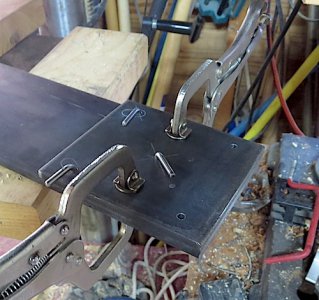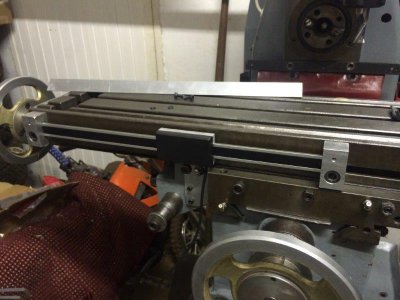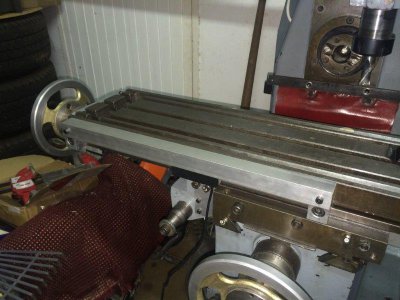Today and a fair part of yesterday, with great effort and not inconsiderable expense, I accomplished nothing.
The idea was to replace the wheels under my mill, with hopes of reducing how much it wiggles.
I figured if I used better wheels with locking swivel wheels, and spaced them wider it might not wiggle and it might be a little easier to steer when moving it.
The old wheels were from harbor freight and were attached under the cabinet.
But, I didn't improve anything, and I didn't know that until I was finished,
which required purchasing and cutting a bunch of steel,
wearing out a bandsaw blade,
hunting all over town for a replacement,
cutting and deburring and cleaning a bunch of expensive steel,
and drilling 20 high precision holes,
then painting and assembling.
Did I mention hoisting the mill off the stand and replacing it?
I don't know how to fix it without throwing more money at it. There is no good place to mount adjusting feet. I suppose I just have to spring for two more of the leveling casters I used on my lathe stand. I'm disappointed in the locking swivel casters I got. They are almost impossible to maneuver.
This is the basic design of the wheel trollys. A bar of 4 x 1/4 steel with 5 x 5 x 5/16 angles to beef it up. The wheel bolts hold it together.
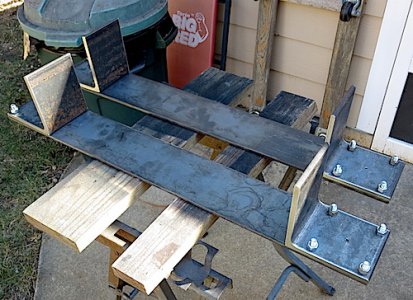
Assembled, this is how it looks.
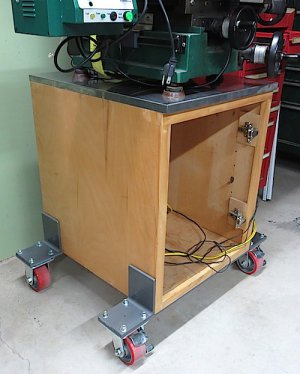
The holes had to be precision drilled.
I Made a pattern and guide plate with 5/32 guide holes and a center locator hole on the mill,
and then cut and bent some locating pins.
I located the holes on the template by clamping a caster on it and using a transfer punch.
The rest of the drilling was on the drill press.
The guide was clamped to the angles and the flat stock. Center hole drilled first, locked in with a pin, then two back side holes, also locked in. Then the front holes.
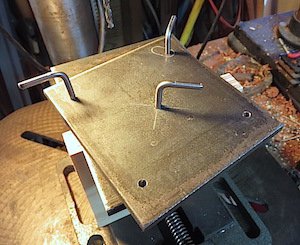
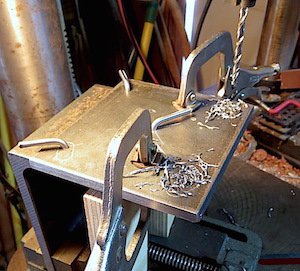
Once the 5/32 holes were located, I discarded the template and finished them out with a pilot point 3/8 drill. The pilot point was a good tight fit in the locator holes, so the drilling to final size went pretty fast.
I'm pleased with the precision of the holes. Everything lined up and the bolts slipped in easily. No small feat on 16 mating bolt holes on a drill press.
